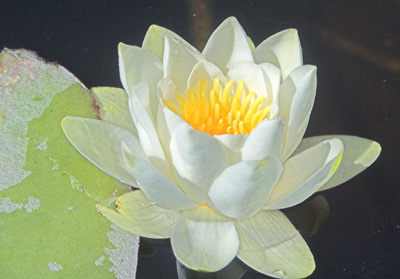- Paleodicots
Paraphyletic group
name = Paleodicots

image_width = 250px
image_caption = "Nymphaea alba", from theNymphaeales
regnum =Plant ae
divisio = Magnoliophyta
included =
*magnoliid
*"Amborella "
*Nymphaeales
*Austrobaileyales
*Chloranthales
*"Ceratophyllum "
excluded =
*eudicot
*monocot
subdivision_ranks = Orders
subdivision = See text.Paleodicots (sometimes spelled "palaeodicots") is an informal name used by botanists (Spichiger & Savolainen 1997, Leitch et al. 1998) to refer to a group of
flowering plant s traditionally considereddicotyledon s but excluded from the monophyletic groupeudicots in classifications based onmolecular systematics .Molecular phylogenies have shown that within the flowering plants (
angiosperms ), there are two majorclade s, recognized in theAPG II system as themonocots and theeudicots (tricolpates in some references). Both aremonophyletic groups. The majority of plants traditionally recognized as "dicots" fall within the eudicot clade, but there is a non-monophyletic residue of early-diverging groups included in thedicots in older systems (e.g., theCronquist system ). These early-diverging dicots have been dubbed the "paleodicots" and correspond toMagnoliidae sensu Cronquist 1981 (minus Ranunculales and Papaverales) and toMagnoliidae sensu Takhtajan 1980 (Spichiger & Savolainen 1997). Some of the paleodicots share apparently plesiomorphic characters with monocots, e.g., scattered vascular bundles, trimerous flowers, and non-tricolpatepollen .The "paleodicots" are not a monophyletic group and the term has not been widely adopted. The APG II system does not recognize a group called "paleodicots" but assigns these early-diverging dicots to several orders and unplaced families:
Amborellaceae ,Nymphaeaceae (includingCabombaceae ),Austrobaileyales ,Ceratophyllales (not included among the "paleodicots" by Leitch et al. 1998),Chloranthaceae , and themagnoliid clade (ordersCanellales ,Piperales ,Laurales , andMagnoliales ). Subsequent research has addedHydatellaceae to the paleodicots.References
*Leitch, I. J., M. W. Chase, and M. D. Bennett. 1998. Phylogenetic analysis of DNA C-values provides evidence for a small ancestral genome size in flowering plants. "Annals of Botany" 82 (Suppl. A): 85-94.
*Rudolphe Spichiger & Vincent Savolainen. 1997. Present state of Angiospermae phylogeny. "Candollea" 52: 435-455 ( [http://www.ville-ge.ch/cjb/recherche/angiophy/angiophy.html text] ).
Wikimedia Foundation. 2010.
